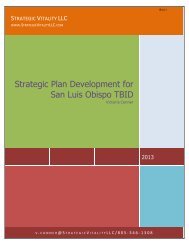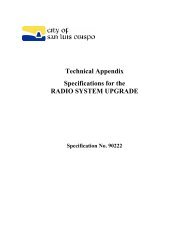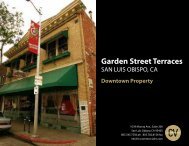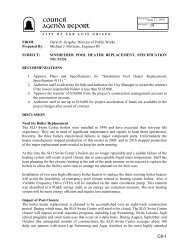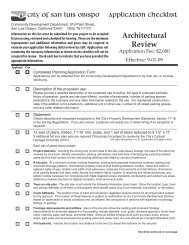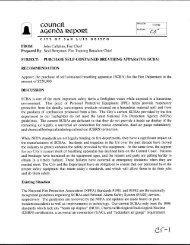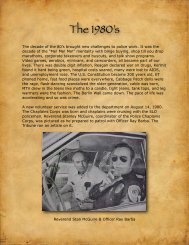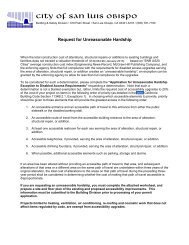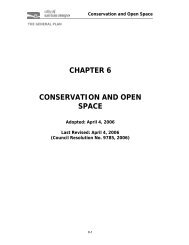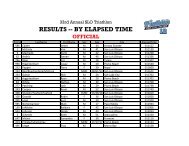Drainage Design Manual - the City of San Luis Obispo
Drainage Design Manual - the City of San Luis Obispo
Drainage Design Manual - the City of San Luis Obispo
Create successful ePaper yourself
Turn your PDF publications into a flip-book with our unique Google optimized e-Paper software.
9.1.1 Detention BasinDetention basins may be classified as:Dry basins. The basins are designed to store water for only a short time during periods <strong>of</strong>high stormwater run<strong>of</strong>f. A drainage control structure, usually consisting <strong>of</strong> a pipe whichcontrols <strong>the</strong> rate <strong>of</strong> outflow from <strong>the</strong> basin, is set in <strong>the</strong> bottom <strong>of</strong> <strong>the</strong> basin, thus providingfor nearly complete emptying <strong>of</strong> <strong>the</strong> pond when inflow ceases. A sump may be providedbelow <strong>the</strong> invert to allow for sediment settling.Wet basins. These basins are designed to maintain a permanent pool <strong>of</strong> water. The outletsare located above <strong>the</strong> permanent water surface, so <strong>the</strong> basin does not drain completely. Wetbasins may be used for water quality improvement and also to provide wildlife enhancement.Because <strong>of</strong> higher, long-term maintenance requirements necessary to preserve that properfunctioning, <strong>the</strong>se facilities are allowed only with specific approval <strong>of</strong> <strong>the</strong> <strong>City</strong> or County.9.1.2 Retention BasinsA retention structure stores all or a portion <strong>of</strong> <strong>the</strong> inflow for a prolonged time period. Theseresemble detention basins; yet have no outlet (o<strong>the</strong>r than emergency outlets). Outflow is viainfiltration or evaporation. In general, <strong>the</strong> design requirements for a retention structure areconsistent with those for a detention structure, unless noted o<strong>the</strong>rwise herein.Because <strong>of</strong> <strong>the</strong> general lack <strong>of</strong> permeable soils in <strong>the</strong> <strong>San</strong> <strong>Luis</strong> <strong>Obispo</strong> watershed, retentionbasins are allowed only with specific approval <strong>of</strong> <strong>the</strong> <strong>City</strong> or County. Also, as with a wetdetention basin, a retention basin requires long-term maintenance to insure proper performance.Therefore, any proposal for a retention basin will require submittal <strong>of</strong> an acceptable long-termmaintenance plan.9.1.3 Special FacilitiesParking lots or athletic fields may be used to provide additional storage <strong>of</strong> stormwater run<strong>of</strong>ffrom less-frequent, higher-intensity storms when used in conjunction with ano<strong>the</strong>r storagefacility. Parking-lot storage may be used for storms greater than <strong>the</strong> 10-year design storm,provided that <strong>the</strong> following conditions are met:• The depth <strong>of</strong> water detained does not exceed one foot at any location in <strong>the</strong> parking lotarea for <strong>the</strong> 100-year design storm; and• The minimum gradient <strong>of</strong> <strong>the</strong> parking lot area subject to ponding is 1%; and• The emergency overflow path meets <strong>the</strong> requirements for pond systems; and• Ponding is restricted to areas that will cause <strong>the</strong> least inconvenience to parking area users.SLO Creek <strong>Drainage</strong> <strong>Design</strong> <strong>Manual</strong> 100 February 2003



